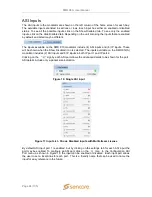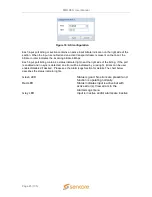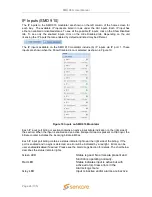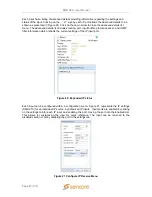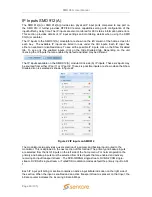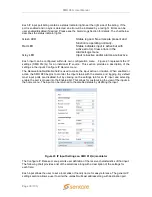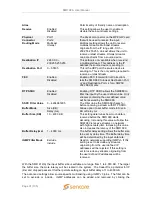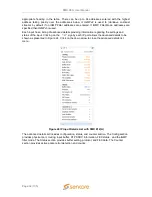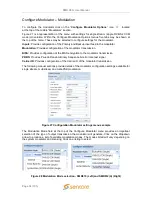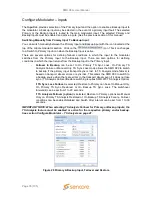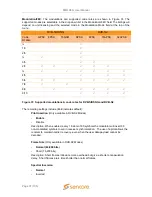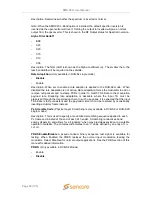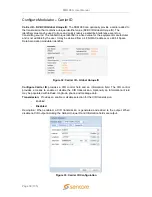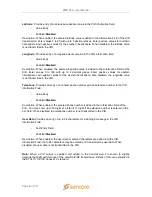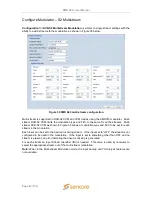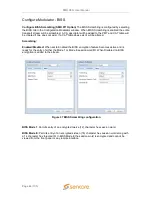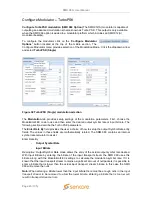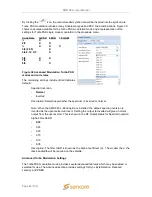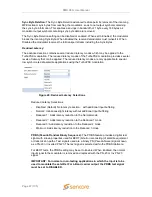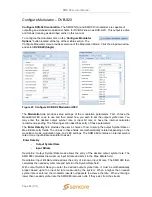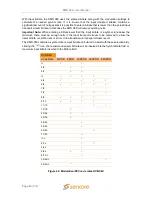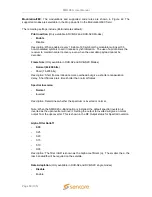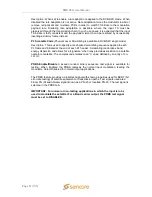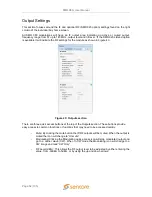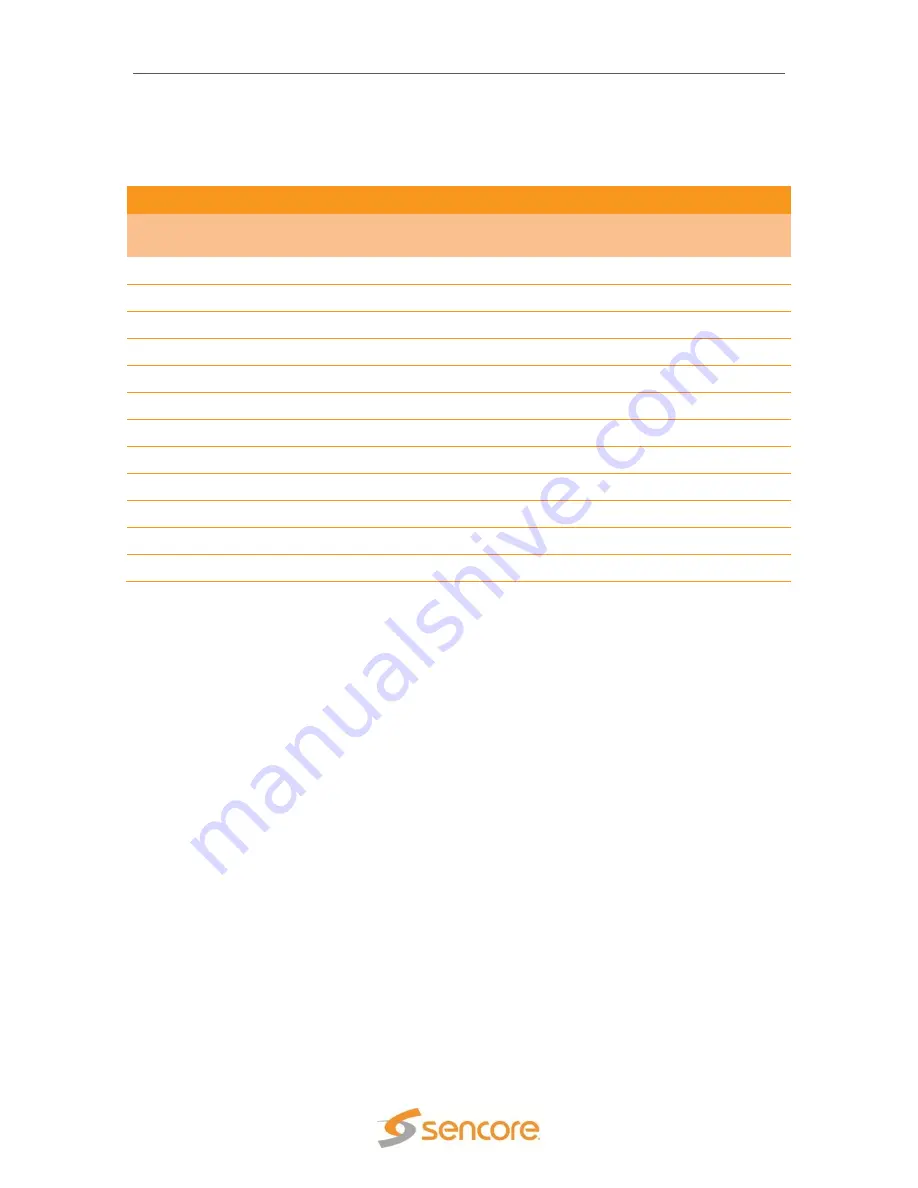
SMD 989
– User Manual
Page 37 (105)
Modulation/FEC
: The modulations and supported code rates are shown in Figure 31. The
supported modes are selectable in the drop down list in the Modulation/FEC field. The listings will
depend on unit licensing and the selected mode in the Modulation Mode field at the top of the
menu.
DVB-S/DSNG
DVB-S2
Code
R12ate
QPSK
8PSK
16QAM
QPSK
8PSK
16APSK
32APSK
¼
√
1/3
√
2/5
√
½
√
√
3/5
√
√
2/3
√
√
√
√
√
¾
√
√
√
√
√
√
4/5
√
√
√
5/6
√
√
√
√
√
√
7/8
√
√
8/9
√
√
√
√
√
9/10
√
√
√
√
Figure 31: Supported modulations & code rates for DVB-S/DSNG and DVB-S2
The remaining settings include (Bold indicates default):
Pilot Insertion
(Only available in DVB-S2 Modes)
-
Enable
-
Disable
Description:
When enabled, every 16 slots of 90 symbols the modulator will insert 36
non-modulated symbols to aid in receiver synchronization. The use of a pilot allows the
receiver to maintain carrier recovery, even when the user data payload cannot be
decoded.
Frame Size
(Only available in DVB-S2 Modes)
-
Normal (64,800 bits)
-
Short (16,200 bits)
Description:
Short frames introduce more overhead but give a shorter encapsulation
delay. Short frames are 4 time shorter than normal frames.
Spectral Inversion
-
Normal
-
Inverted


